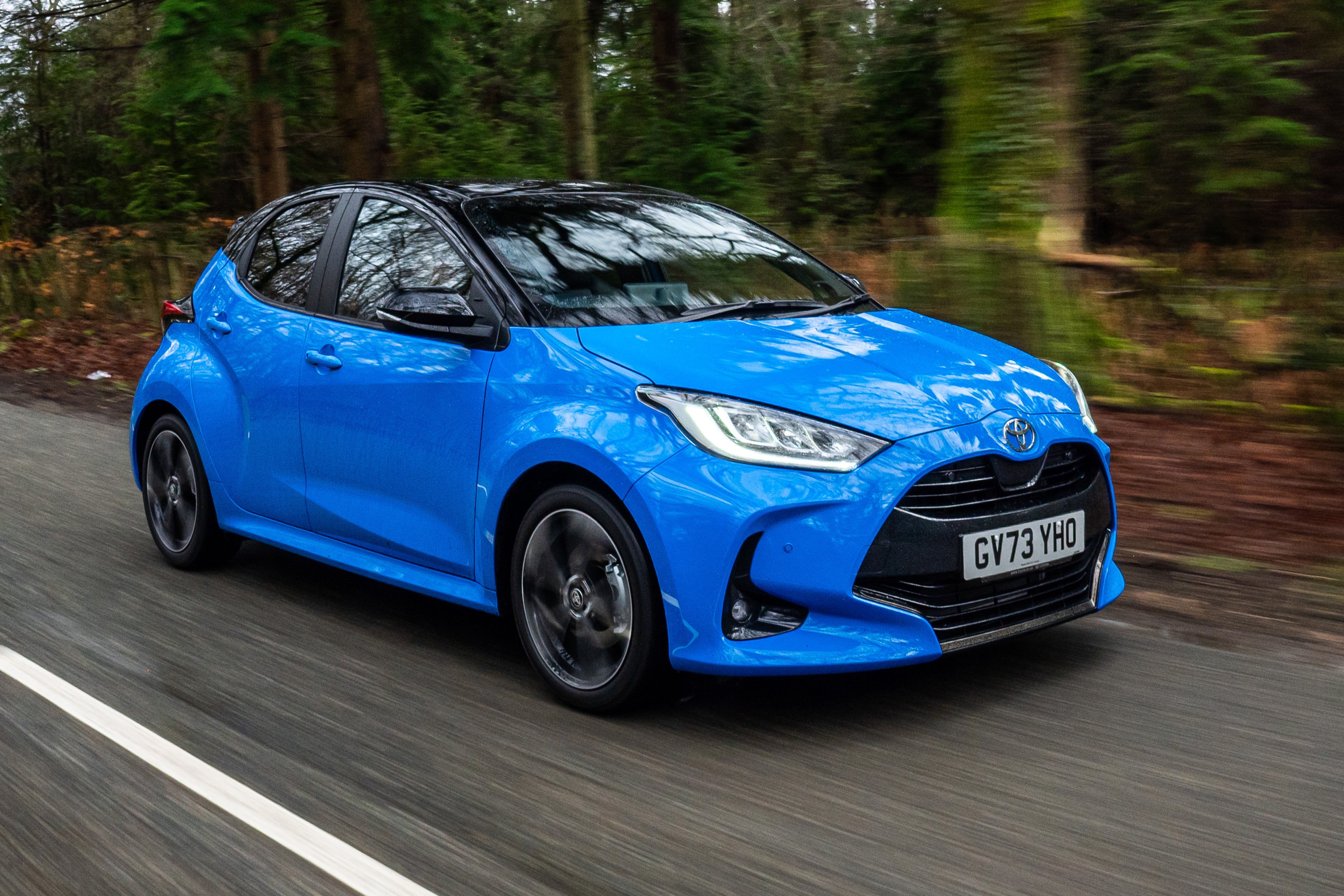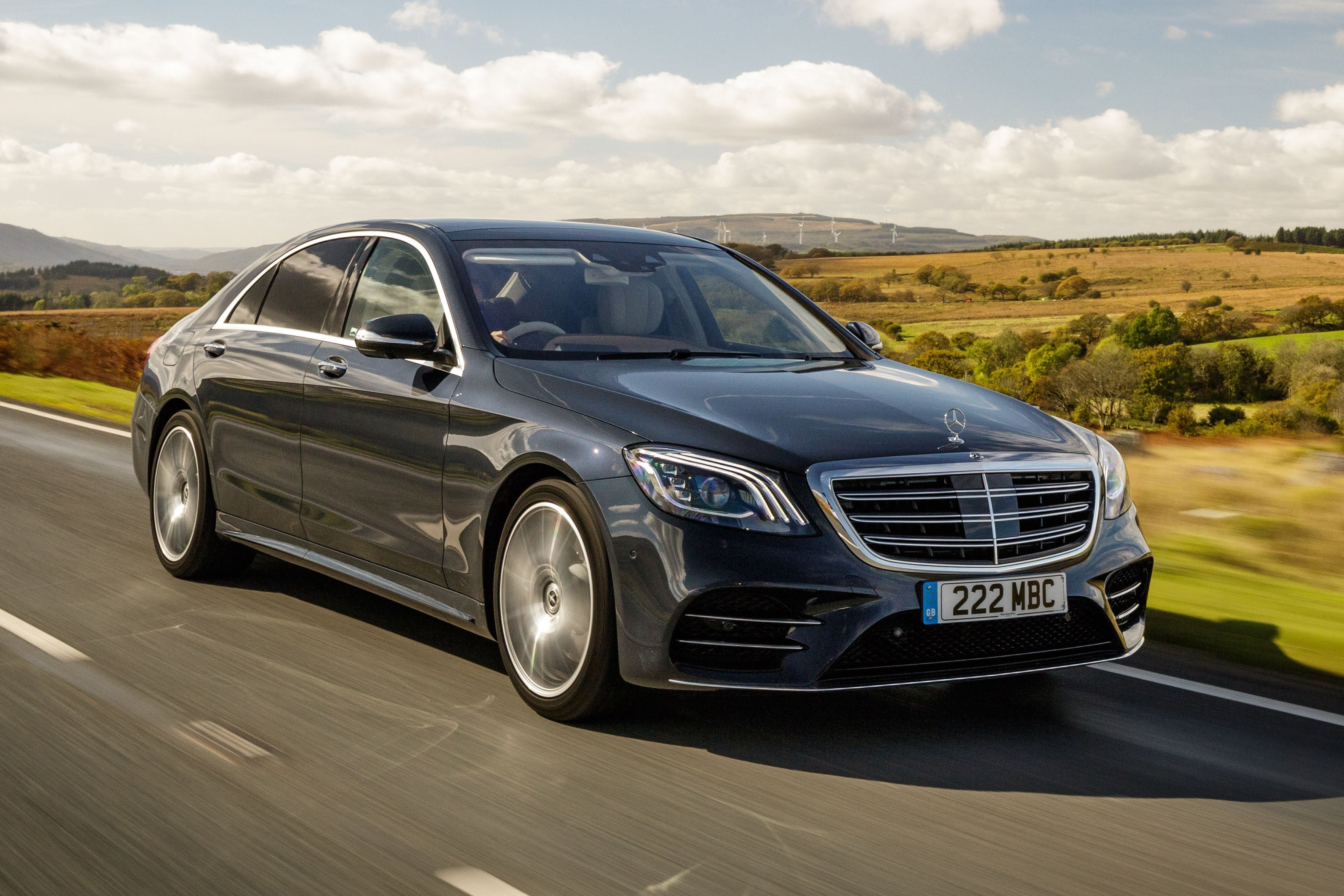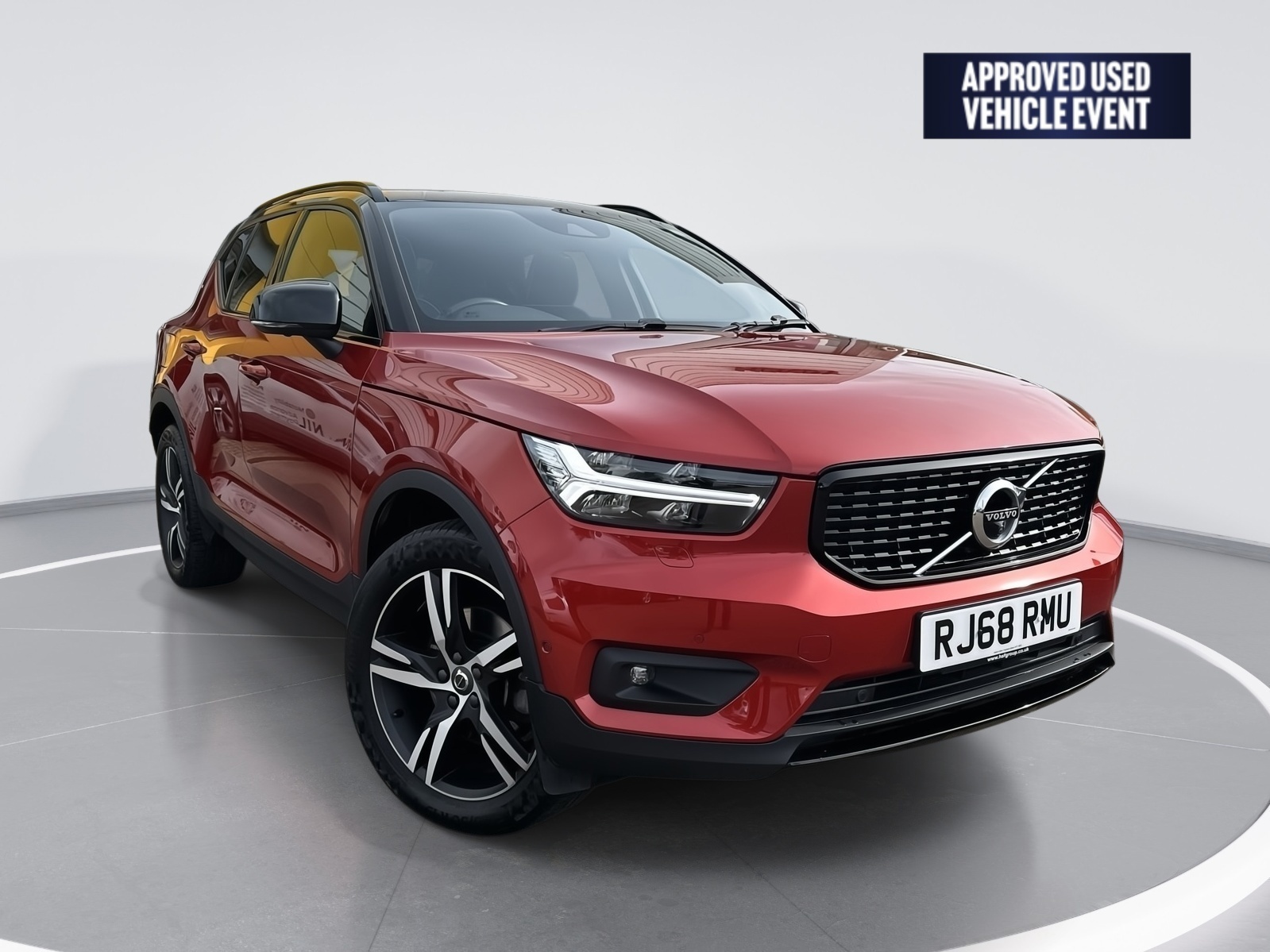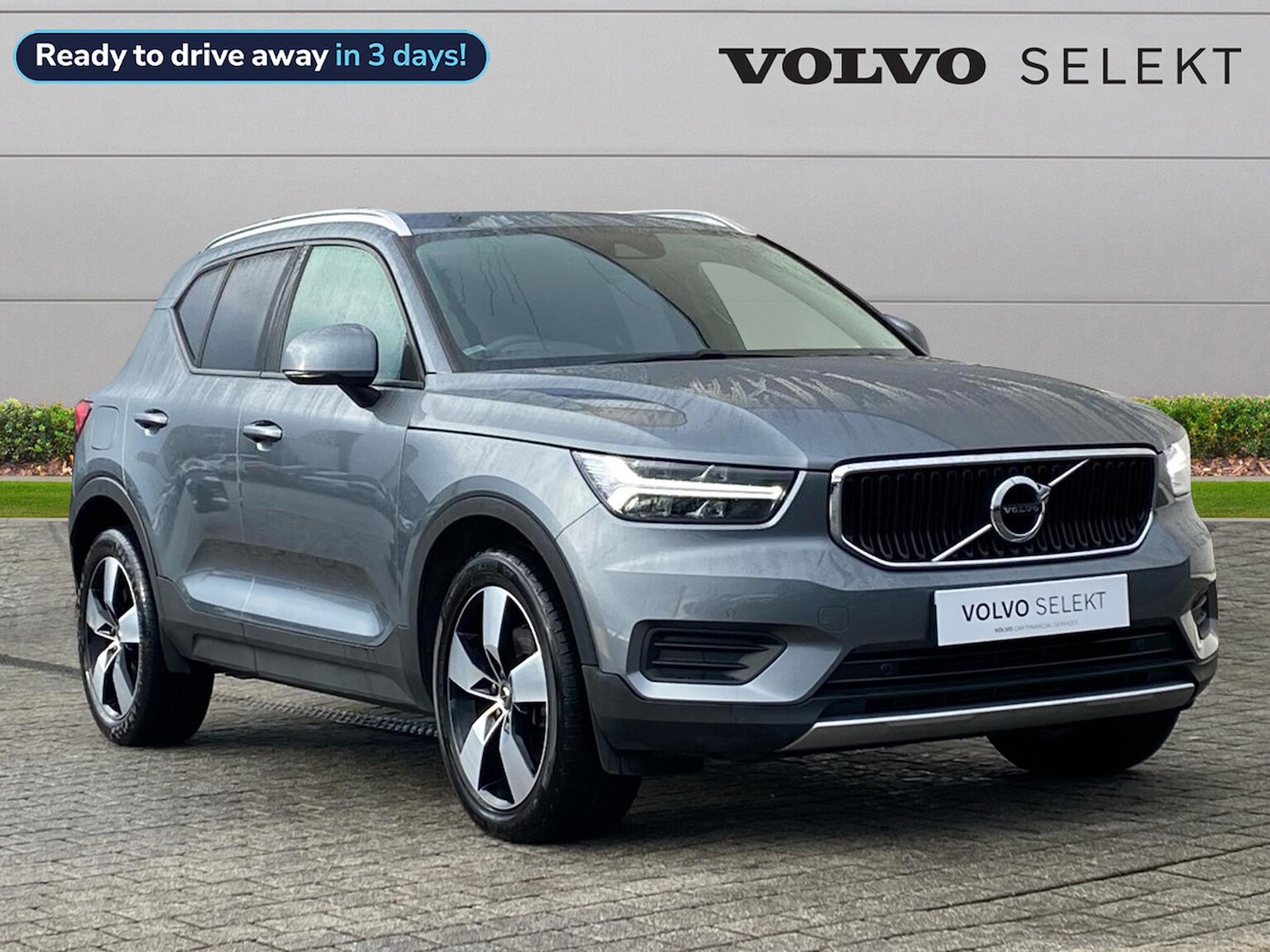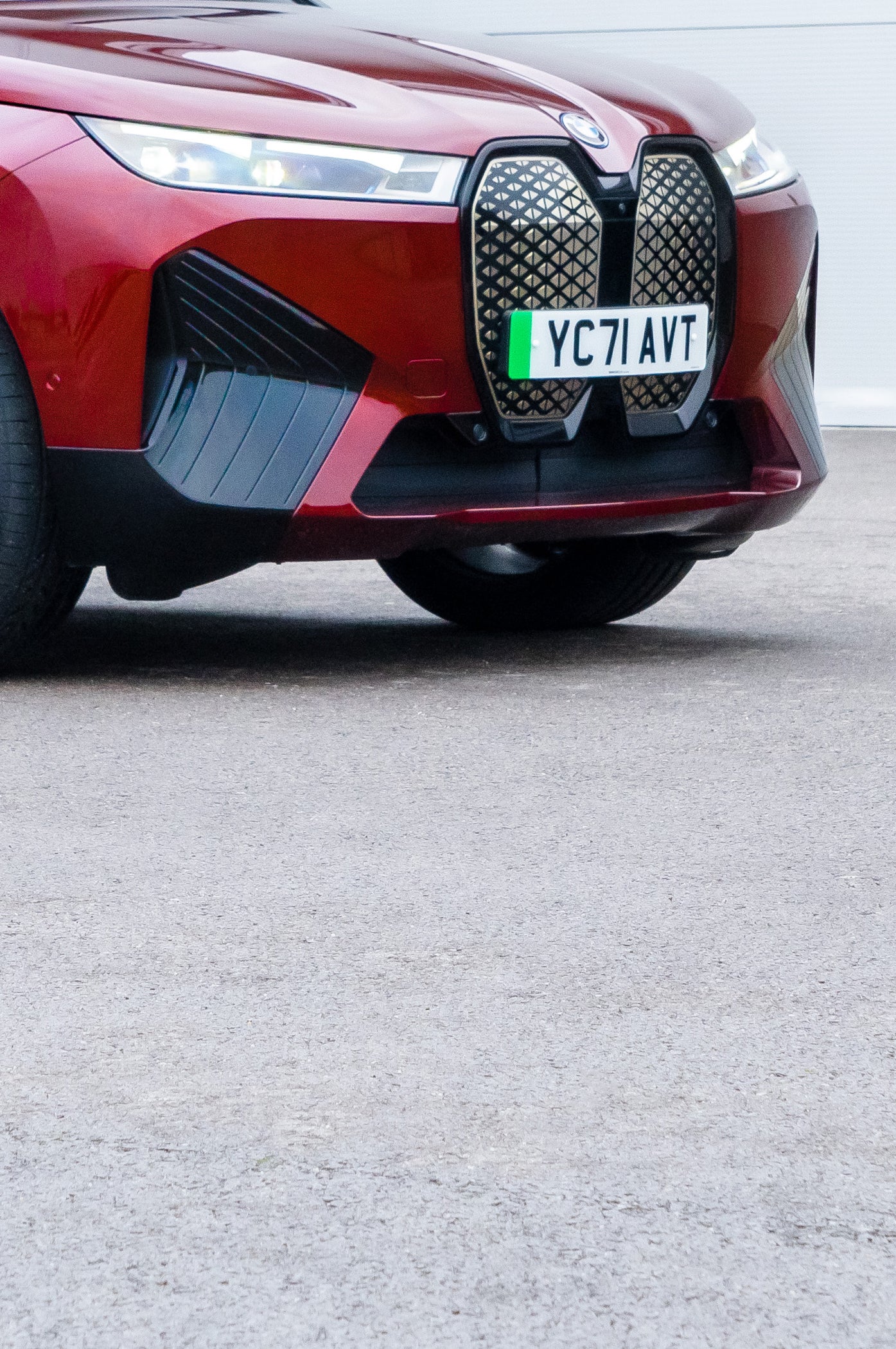
Best self-driving cars 2023
-
What are the best self-driving cars?
-
We test and rate the contenders
-
Find a self-driving car for sale
It'll be a few more years before fully autonomous cars arrive in the UK, but we've compiled 10 cars with the most advanced self-driving tech available to buy right now.
The best self-driving cars will take a lot of the stress out of day-to-drive driving, while their driver-assistance tech could help prevent a collision. Whether it's keeping you in your lane on the motorway or maintaining a steady distance from the car in front, these cars are sure to keep you on the straight and narrow.
We've also included cars with self-parking features (because who enjoys parallel parking?) – some of which you don't even need to be in the car for. And yes, adaptive cruise control counts as self-driving technology.
Best self-driving cars 2023
Tesla Model 3
Year launched: 2018

Electric car manufacturer Tesla shouts the loudest about its self-driving tech – and it's not entirely a load of hot air.
Tesla's basic Autopilot system is standard on all the cars it sells in the UK. This combines adaptive cruise control, emergency braking, blind-spot monitoring and lane-keeping assist systems. Essentially, once you're on the motorway, it'll match the speed of the car in front and keep you in your lane with little input from the driver.
The Tesla Model 3 can be equipped with Enhanced Autopilot which can change lanes (you just need to indicate and it'll monitor the surroundings and move over if it's safe to do so), as well as park itself. Then there's the Full Self-Driving Capability – an expensive option which gives the Model 3 the ability to stop at traffic lights or stop signs. Tesla says it'll soon be adding the ability to autosteer on city streets.
Volvo XC40
Year launched: 2018

The Volvo XC40 is an outstanding family-sized SUV, so it makes sense that it’s Volvo’s best-selling car in the UK, and a great alternative to a BMW X1 or Volkswagen Tiguan, as well as more mainstream models like the Kia Sportage and SEAT Ateca.
The XC40 features Pilot Assist (level 2), which can provide steering assistance and maintain the distance to the vehicle in front of you. Volvo recommends always keeping your hands on the steering wheel.
Volvo's first all-electric car - the XC40 Recharge Pure Electric is also available - offering a range of 249 miles.
Lexus LS
Year launched: 2017

The newest LS is about as premium as you could get, and we can’t imagine many people will be buying it with a near six-figure price tag on the top models. But what do you get for that money? A whole lot of tech, including Lexus Teammate - that’s what.
Lexus Teammate - debuting in the 2021 Lexus LS - is an all-new advanced driving assistance system and the brand’s first real foray into the realm of automated driving. Lexus Teammate uses AI to learn a driver’s habits and road conditions. This, paired with other vehicle performance data, helps the system predict and react to situations in real-time.
In addition to level 1 systems like lane keeping assistance and automatic braking, Teammate offers Advanced Drive and Advanced Park, leaving room for future software updates. It isn’t level 5 automation and Lexus hasn’t yet gone into detail about specifics, but Advanced Drive offers the capabilities of adaptive cruise control, automatic stop-and-go, lane keeping assistance, lane centering assistance, lane changing assistance and automated passing - offering hands-free driving.
Audi A1 Sportback
Year launched: 2018

The Audi A1 is good to drive in town or out on the open road, with a fully digital 10-inch display standard on all models. It looks like a shrunken Q2 at the front.
Audi’s sporty hatchback is more premium and spacious (with more head and leg room inside) than the previous generation A1 - and it gets more tech.
The A1 features park assist, which can steer the A1 Sportback into parallel or perpendicular parking spaces - as well as level 1 automated systems like lane departure warning and active cruise control. To engage park assist, drivers just have to engage the right gear, and use the accelerator and the brakes while park assist backs the car into the spot. Fear not, the system also exits parallel parking spaces.
BMW iX
Year launched: 2022

You'll love or loathe the way the BMW iX looks, but there's no denying that it's a very impressive electric SUV. With no fewer than five cameras, five radar sensors and 12 ultrasonic sensors, it's also very capable at helping you avoid a collision.
BMW says it's aiming for 'level 3 functionality in the medium term', but there's already a long list of standard driver-assist features. These include a front collision warning system that can detect cyclists and pedestrians, while the steering assistant can keep you in your lane on the motorway.
We also like the way the adaptive recuperation feature works with data from the sensors as well as the navigation system. When you're approaching a hazard (such as a corner or a roundabout), the iX's regenerative braking is ramped up so that you slow down as soon as you lift off the accelerator. On the open road, it'll coast freely.
Nissan Leaf
Year launched: 2018

The Leaf is a great entry to the electric car world. It demands few compromises, has punchy acceleration, comes well equipped and drives better than many rivals - while undercutting them on price. The range isn’t class-leading, but it’s an impressive all-rounder.
A modified, self-driving Nissan Leaf travelled 230 miles across the UK in February 2020 - the longest single journey achieved by an autonomous car in the UK, and one which included B-roads, motorways, roundabouts and overtaking manoeuvres.
The standard Nissan Leaf includes ProPilot (as an option), a semi-autonomous system that can be used when driving in single-lanes on dual-carriageways and motorways, helping to maintain lane positioning keeping a safe distance from the vehicle in front.
Propilot Park tech takes control of the accelerator and brake for completely autonomous parking in both bay and parallel spaces.
Mercedes C-Class
Year launched: 2014

The Mercedes-Benz C-Class is sleek, stylish and spacious. The interior is minimalist with a large one-piece centre console. It really shines in terms of refinement and comfort, plus it's incredibly quiet and comfortable on the move - making it an ideal long distance car.
But the latest updated model also comes as standard with a self-parking system. So, if you want a new Merc, but are worried about kerbing the wheel straight out of the dealership - prepare to have your worries eased.
Activated at a touch of a button on the dashboard, the Active Parking Assist system can work out if a space is big enough for the C-Class to fit. It then takes care of manoeuvres, controlling the steering. The driver just has to accelerate and brake, easy peasy.
Volvo V60
Year launched: 2018

While you're making a statement by buying a Volvo V60 over a German rival (like a BMW 3 Series), it doesn't represent too much of a compromise. The interior's lovely, with loads of space and it's a relaxing (rather than sporty) drive.
Like the XC40, the Volvo V60 features Pilot Assist - which uses lane and steering assistance, as well as to maintain an even speed - to help the driver. The driver simply picks the desired speed and a time interval to the vehicle ahead.
The V60 - like all Volvo models - also gets Park Assist Pilot as an optional extra. The self-parking system can guide you into a bay that’s only 20 per cent larger than the car - which is useful for fairly big Volvos.
Ford Fiesta
Year launched: 2017

The Ford Fiesta is Britain's best-selling car and, while it might be an affordable little hatchback, it does have an element of self-driving tech. The optional Driver Assistance Pack comes with adaptive cruise control (unusual on a car of this size), intelligent speed assist, driver impairment monitor and autonomous emergency braking.
The adaptive cruise control is worth the £350 for the pack alone, especially as it can recognise traffic signs and, on automatic models, bring the car to a complete halt in traffic before setting off again.
If the idea of parallel parking fills you with dread, the Parking Pack adds Ford's active park assist feature. This will steer you into tight parking spaces while you control the accelerator, gears and brake. It's a bit gimmicky but genuinely useful – especially if you regularly rely on on-road parking.
Volvo XC60
Year launched: 2017

The Volvo XC60 is aimed at family car buyers, with a spacious interior, low fuel costs and lots of safety kit as standard. All XC60 models get automatic city braking with pedestrian (and animal) recognition. This means it scans the road ahead and will automatically apply the brakes or help the driver steer around an obstacle in an emergency situation.
Comfort and refinement are the XC60's strong suit. Its excellent ride quality (with small wheels) is backed-up by a luxurious and refined interior that is more than a match for anything from the competition. It also offers one of the best ride qualities of any car in its class.
The Pilot Assist system scans the distance to the vehicle ahead and the lane's side markings on the road surface using the camera and radar unit. The car then manages speed and steering to keep the XC60 in the middle of a lane, at a safe distance from other vehicles.
A self-driving car can move without being operated by a driver. Using a combination of radar, sensors and cameras, self-driving cars can get from A to B without any human input. But - legally - fully-automated cars can’t yet be used on UK roads.
While these cars are impressive, they aren’t fully autonomous - as that would mean the car itself is choosing routes and making decisions for itself. Spooky. Most self-driving cars are automated, so they still need a human driver to take control if necessary. To simplify these cars, there’s five levels of grading a vehicle's autonomous capability (0-5).
Level 0 vehicles might issue warnings, but you’ll have to do the work. At Level 1, you’re expected to do the bulk of the driving but you might get features like automatic emergency braking and parking assistance.
The automated system takes control of accelerating, braking and steering at level 2. Even though it’s called hands off, you’ll need to keep your hands on the wheel just in case. This is still relatively rare in the UK - although automation up to level 2 is legal. In fact, the Government has said it’s moving towards having fully self-driving cars on public roads by 2021.
At Level 3, the vehicle will make decisions by itself, such as when to slow down and perform manoeuvres. For example, Level 3 automation could do the driving for you in slow-moving traffic. This technology exists but it’s not yet legal in the UK to use on public roads.
Level 4 lets you go to sleep or leave the driver’s seat while the vehicle is in motion. This sort of self-driving car is either geofenced (strictly limited to certain areas) or reserved for special circumstances like traffic jams.
Level 5 is full automation and includes trialling robot taxis. They tend to lack steering wheels, pedals or other controls. As with Level 4, it's still in development and so not yet legal on roads.
Loading...

